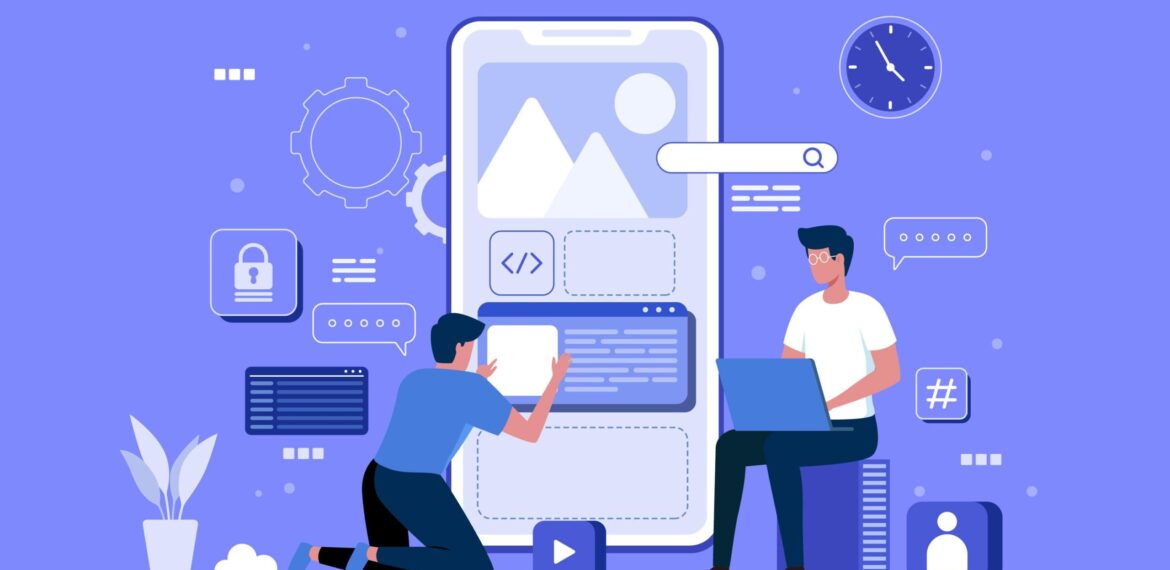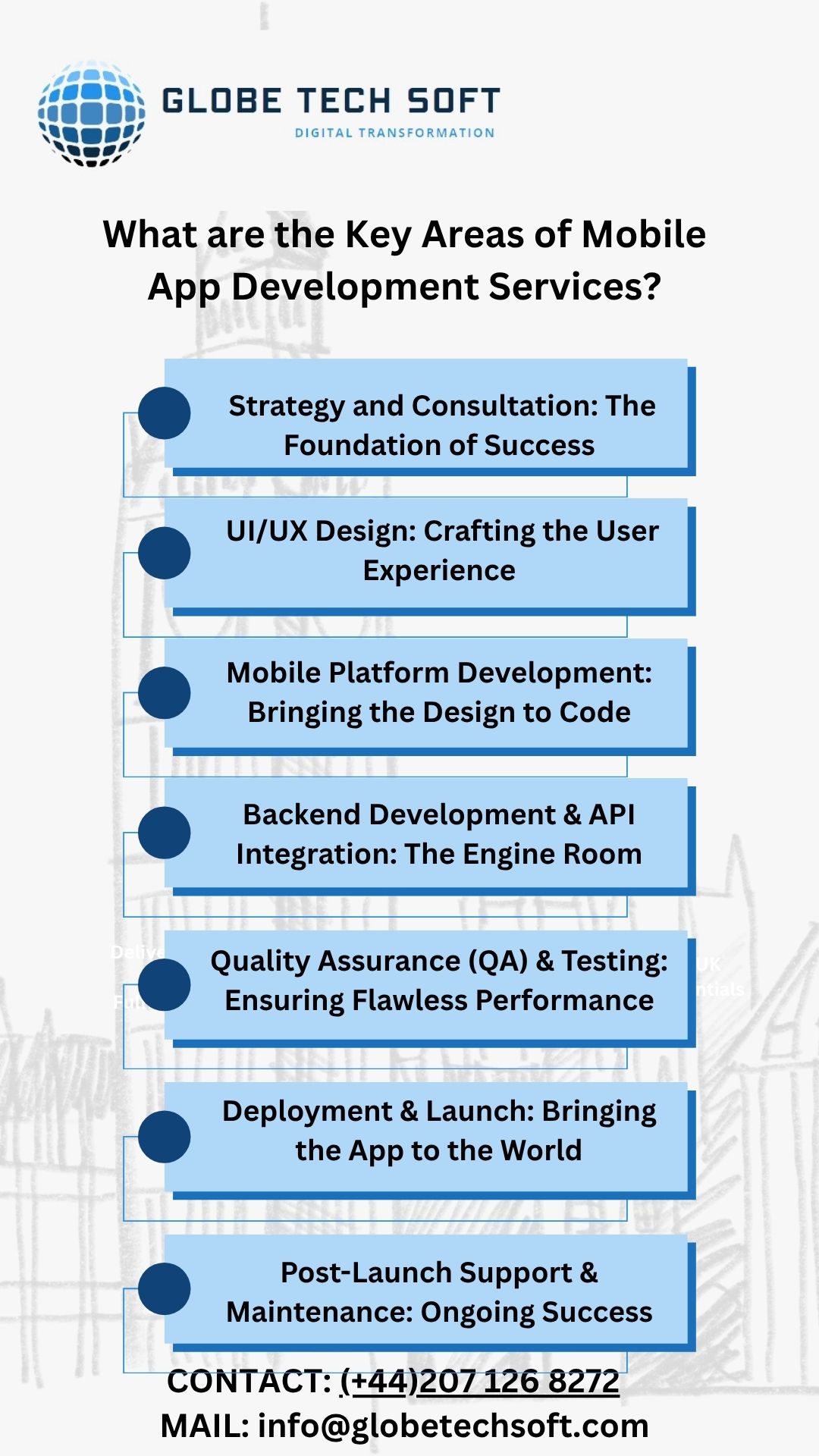
What are the Key Areas of Mobile App Development Services?
What are the Key Areas of Mobile App Development Services?
In today’s mobile-first world, a well-executed mobile app can be the cornerstone of a business’s success. But what exactly goes into creating these ubiquitous digital tools? Mobile app development is a multifaceted process, encompassing several key areas that work in tandem to bring an idea to life.
Here’s a breakdown of the core services and phases involved in building a successful mobile application:
1. Strategy and Consultation: The Foundation of Success
Before a single line of code is written, a robust strategy is essential. This initial phase sets the entire direction for the project.
- Understanding Business Goals: What problem will the app solve? Who is the target audience? What are the key objectives – increased sales, improved customer engagement, streamlined operations? Defining these goals is paramount.
- Market and User Research: A successful app addresses a real need. This involves in-depth market analysis, competitor benchmarking, and creating user personas to understand user behavior, preferences, and pain points. This research helps shape product direction and mitigate risks.
- Feasibility Analysis: Assessing the technical and financial viability of the app idea, including the required technology stack, potential challenges, and resource allocation.
- MVP (Minimum Viable Product) Definition: Identifying the core features that will deliver the most value to early users, allowing for faster time-to-market and iterative development.
2. UI/UX Design: Crafting the User Experience
Design is far more than just aesthetics; it’s about creating an intuitive, engaging, and enjoyable experience for the user.
- User Experience (UX) Design: Focusing on how users interact with the app, ensuring seamless navigation, logical information flow, and minimal friction. This includes:
- Wireframing: Creating low-fidelity blueprints of the app’s layout and structure.
- Prototyping: Building interactive mockups to simulate user flow and test functionality before development.
- Information Architecture: Organizing content and features in a logical and easily discoverable manner.
- User Interface (UI) Design: Bringing the visual elements to life, including:
- Visual Design: Choosing color schemes, typography, iconography, and imagery that align with the brand and appeal to the target audience.
- Layout and Elements: Designing the placement and appearance of buttons, forms, menus, and other interactive components.
- Responsiveness: Ensuring the app looks and functions perfectly across various devices and screen sizes.

3. Mobile Platform Development: Bringing the Design to Code
This is where the actual coding happens, transforming designs into a functional application. The choice of platform development significantly impacts performance, cost, and reach.
- Native App Development: Building separate applications for specific operating systems (iOS using Swift/Objective-C, Android using Kotlin/Java).
- Pros: Optimal performance, access to all device features, superior user experience.
- Cons: Higher development cost and time due to separate codebases for each platform.
- Cross-Platform App Development: Developing a single codebase that can run on multiple platforms (e.g., using frameworks like Flutter, React Native, Xamarin).
- Pros: Faster development, reduced costs, consistent user experience across platforms.
- Cons: May have limitations in accessing certain native device features or achieving the absolute highest performance.
- Hybrid App Development: A blend of web technologies (HTML, CSS, JavaScript) wrapped in a native shell.
- Pros: Cost-effective, single codebase, easier maintenance.
- Cons: Performance might not be as high as native, and reliance on plugins for native features.
- Progressive Web Apps (PWAs): Web applications that offer an app-like experience directly through a web browser, often with offline capabilities and push notifications, without requiring an app store download.
4. Backend Development & API Integration: The Engine Room
While the UI/UX forms the “face” of the app, the backend is its “brain,” handling data, logic, and external communication.
- Database Management: Designing and implementing databases to store and retrieve app data efficiently and securely.
- Server-Side Logic: Developing the core business logic and functionalities that run on the server.
- API (Application Programming Interface) Development: Creating APIs to enable seamless communication between the mobile app and the backend server, as well as with third-party services (e.g., payment gateways, social media APIs, mapping services).
- Cloud Infrastructure: Setting up and managing cloud services (AWS, Azure, Google Cloud) for scalability, reliability, and data storage.
- Security: Implementing robust security measures to protect user data and prevent unauthorized access.
5. Quality Assurance (QA) & Testing: Ensuring Flawless Performance
Rigorous testing is crucial to identify and fix bugs, ensure functionality, and deliver a high-quality app.
- Functional Testing: Verifying that all features and functionalities work as intended.
- Usability Testing: Evaluating the app’s ease of use and user satisfaction.
- Performance Testing: Assessing the app’s responsiveness, stability, and speed under various loads.
- Compatibility Testing: Ensuring the app performs well across different devices, operating systems, and screen resolutions.
- Security Testing: Identifying vulnerabilities and ensuring data protection.
- Regression Testing: Running tests to confirm that new changes haven’t introduced new bugs or broken existing functionalities.
6. Deployment & Launch: Bringing the App to the World
Once thoroughly tested, the app is prepared for launch.
- App Store Submission: Preparing and submitting the app to relevant app stores (Apple App Store, Google Play Store), adhering to their guidelines and requirements.
- Listing Optimization (ASO): Optimizing the app’s title, description, keywords, and screenshots to improve its visibility and discoverability in app stores.
- Marketing & Promotion: Developing and executing strategies to promote the app and attract users.
7. Post-Launch Support & Maintenance: Ongoing Success
The app development journey doesn’t end at launch. Ongoing support is vital for long-term success.
- Bug Fixing & Updates: Addressing any issues that arise post-launch and releasing regular updates to improve performance and add new features.
- Performance Monitoring: Continuously tracking app performance, user engagement, and crash analytics.
- Feature Enhancements: Implementing new features and improvements based on user feedback and market trends.
- Security Patches: Applying necessary security updates to protect the app from emerging threats.
By focusing on these key areas, mobile app development services provide a comprehensive approach to building applications that are not only functional and visually appealing but also strategically aligned with business goals and designed for long-term success in the dynamic mobile landscape.


